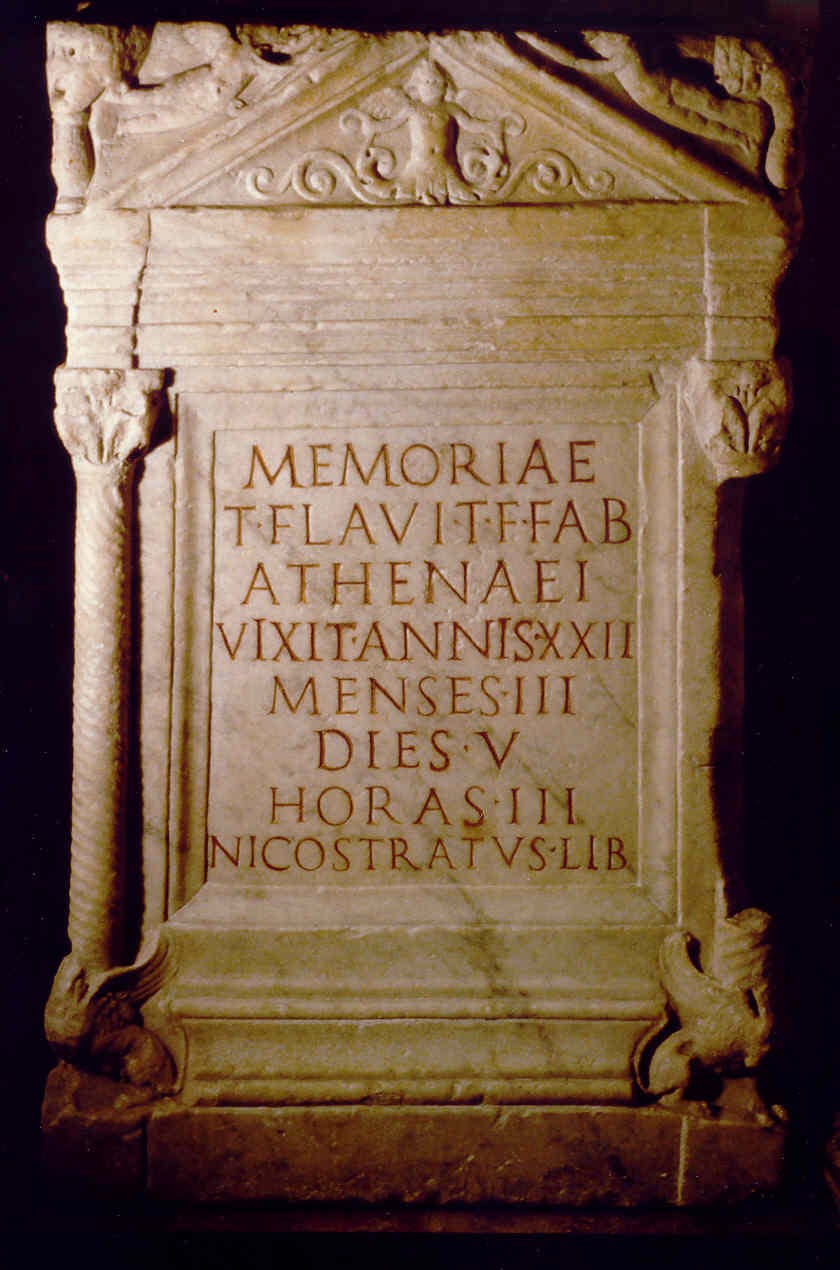Funerary altar of Titus Flavius Athenaeus
Roman Art
Found in Rome in the church of Santo Stefano degli Ungheresi, the altar was transferred first to the Germanic-Hungarian College and then to the Vigna Torre near the Porta Salaria, where it remained until the beginning of the seventeenth century (CIL, VI 18004; EDR 111203)
The artifact became part of the Ludovisi collection until the twentieth century, when it was acquired in the Heikamp collection to be finally donated to the Uffizi in 1994.
It is a funerary altar which resembles a small temple without a crown. The dedicatory inscription is placed inside a sophisticated frame, and is enclosed by two twisted columns with Corinthian capitals and sphinxes that support a high tympanic entablature. On the pediment stands a winged figure with arms outstretched to hold two vegetable spirals in his hands. Two winged erotes are inserted in the plumes that converge in flight towards the center. On the sides are represented the dedicant on the left, the deceased on the right.
Text
On the right side
T(itus) Flavius Athenaeus
On the front
Memoriae
T(iti) Flavi T(iti) f(ili) Fab(ia)
Athenaei,
vixit annis XXII,
5 menses III,
dies V,
horas III,
Nicostratus lib(ertus)
The libertus Nicostratus (did)
To the memory
of Titus Flavius Athenaeus
Son of Titus Fabia
Who lived 22 years,
3 months,
5 days,
3 hours
On the left side
T(itus) Flavius Nicostratus
The altar was dedicated to the memory of a boy who died at the age of 22. He must have been the son of an imperial freedman of the Flavii family. The dedicatee was the freedman Tito Flavio Nicostrato whose name and effigy are placed on the side of the sculpture together with those of the deceased.
D. Gionta, Epigrafia umanistica a Roma, Messina 2005, tav. XVIII (4)
